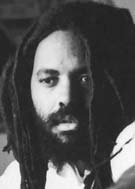![]()
Write us!
[email protected]
U.S. Politics
Who ‘We’ Are
By Mumia Abu-Jamal

“When is a nation?” From, The Open Sore of a Continent, By Wole Soyinka (1996).
With his dramatic, somewhat poetic turn of phrase, the Nigerian playwright, scholar/activist raises a question that resonates far beyond the borders of his West African homeland. His question asks, in almost poetic code, “What do we mean when we claim the relationship of nationality?”; “What binds us together?”; and ultimately, “Who are ‘we’?”
In times of crisis, conflict and controversy, we learn that the “we” used by leaders, is often one different from those used by people who live in a shared polity. In America, when a politician spoke of “we,” for centuries that term meant citizen,” and was, by custom, law, and definition, white men of property.
It therefore excluded the vast majority of human beings who shared the nation-space; women (who were probably the majority), Indians, Africans, poor, property-less white men, and, at times Catholics, Jews and Mormons.
From the earliest days of the American Republic, Chinese were legally excluded from citizenship. In 1790, in fact, just months after the ratification of the U.S. Constitution, Congress would limit naturalization to “any alien, being a free white person who shall have resided within the limits and under the jurisdiction of the United States for a term of two years.” (See Ian F. Haney Lopez, White By Law: The Legal Construction of Race (New York: New York University Press, 1996, p. 42). For the next 150 years, people who were Hindus, Sikhs, Mexicans, Japanese, Syrian, Arabs, Polynesians, and many others, were defined as non-whites, by law, and therefore denied American citizenship, the right to vote, the right to a passport, or the right to testify in court (especially against whites!).
It took decades of struggle, and hard-fought social movements, to move the bar from such a ludicrous definition of citizenship. For many Americans, that bar has never moved.
Who we are, then, is not who we were, for the notion of American citizenship is a changing thing; it is built by the struggles of many.
Yet, it is also true that, far too often, the dark mirror of who we are can be seen in the color photos emerging from the gulags of Abu Ghraib prison in Iraq.
We are addicted to humiliating the weak.
We are hierarchical (meaning we follow the orders of those in power, even if the orders are evil).
We are unfeeling to the pain and terrors of others, (especially if the “other” is perceived as non-White, like Arabs).
Much has been made of the Abu Ghraib photographs which have spawned this scandal, yet how many of us know that several of the accused actually sent photos to their friends who were stateside, apparently proud of how they treated the cowering “towel-heads” in Iraq?
Another truth about who “we” are? We are racist.
That’s the America that emerges from the glorious army of the republic; which is often touted as the greatest exemplar of racial peace ad harmony in the nation. It doesn’t matter that perhaps a third of that army is African-American or Hispanic, or that perhaps 15 percent of US Army personnel are female. If we have learned anything, it is that ideas, ways of looking at the world, across racial, linguistic, and gender barriers. Members of institutions adopt ways of looking at those deemed “others.”
Today, after September 11th, Arabs and Muslims are “others.”
Therefore, the horrific racist, depraved, and humiliating treatment of those in Abu Ghraib. They are “other”; “else” and “less than” ... and therefore, subjected to treatment that can only be deemed barbarous.
Abu Ghraib is us.
—Copyright © Mumia Abu-Jamal, May 29, 2004
Write us
[email protected]